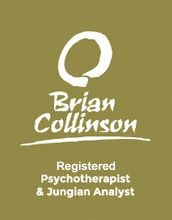How to Know What You Want, 3: Integrity & Holding Opposites

In Parts 1 & 2 of “How to Know What You Want”, we’ve looked at a lot of the intricacies of genuinely understanding our desires. So, now what?

We know now that, to get to “How to Know What You Want”, there are a lot of different parts of ourselves, both conscious and unconscious, that we have to take into account. How exactly can we do that? How do we ever get to a genuine knowledge of our real desires? As we discussed in the last post, we’re likely not going to do it by creating a ledger sheet!
We are complex and intricate beings. Depth Psychotherapy asserts that we have many different aspects to our personalities, both conscious and unconscious. How do we find our way through all of this complexity and get to what it is that we really want?
To find this, we have to approach the question of what we want with integrity.
Integrity
Now, as soon as you use a word like “integrity”, it can conjure up some pretty unhelpful misconceptions. When many people hear that word, what arises for them is the idea of someone who has a very conventional, probably old-fashioned morality, and who follows moral rules in a completely unbending way. However, in his book Integrity in Depth, Jungian psychoanalyst John Beebe invites us to see the word “integrity” in a different way. He quotes American author Robert Grudin, who in part defines integrity as
…an inner psychological harmony and wholeness…. a conformity of personal expression with psychological reality….
Now this is a significantly different understanding of integrity. For Beebe, it’s clear that integrity has to do with taking all that we are into account. If we are to have an integrity-based approach to the question of how to know what you want, there has to be a harmony and wholeness between our inner and outer reality. Also our “personal expression”, or everything that we do in the outer world has to conform with our complete psychological reality. It has to take into account all that we’re thinking and feeling.
Holding the Opposites
To have this kind of “psychological harmony and wholeness” means to bring together what the ego wants, with what the shadow wants. As we’ve discussed before in this blog, the shadow was defined by C.G. Jung as “the thing a person has no wish to be”. To put it another way, the shadow is composed of everything that the conscious personality experiences as negative. Just what exactly is in the shadow differs greatly from individual to individual. The shadow of a Mafia Don is likely to look very different from the shadow of the Pope. Yet we can be sure that the ego doesn’t like whatever it is!
Part of what is in the shadow are wants and desires. Often, these can be desires that are completely unacceptable to the ego—so much so, that the ego may not even acknowledge their existence. Nonetheless, they are part of our actual desires.
The task of getting down to our real wants can take some real fortitude and courage. We may have to be prepared to really look at the shadow and recognize what it wants. Then, we need to hold that in tension with the more acceptable desires of the ego. If we can do this, then, over time, what it is that we “really want” will gradually emerge from the tension.
Wishing you every good thing on your personal journey,
© 2022 Brian Collinson, 2238 Constance Drive Oakville, Ontario (near Mississauga)
